Scientific Cooperation
Popularizing the science of astronomy to pass on my passion to others, dissecting astronomical image acquisition and processing techniques to initiate beginners and showing celestial wonders to complete strangers are part of what motivates me every day. .
However, the desire to be able to contribute, however humbly, to the progress of science has always been dormant in me. Probably a section of DNA passed down from my father who was Director of Pharmaceutical Research at Bristol-Myers.
In the course of my reading, I have clearly understood that two fields among others are at the forefront of the news in astrophysics. These are exoplanets, these celestial bodies in orbit around stars other than our sun, and the detection of gravitational waves, a slightly more specialized subject which I will talk to you about a little later.
Fortunately, there are collaborative teams that pair professionals with amateurs that have been set up in these two areas. I have chosen to participate and I will share the details with you, if these projects are of interest to you as well.
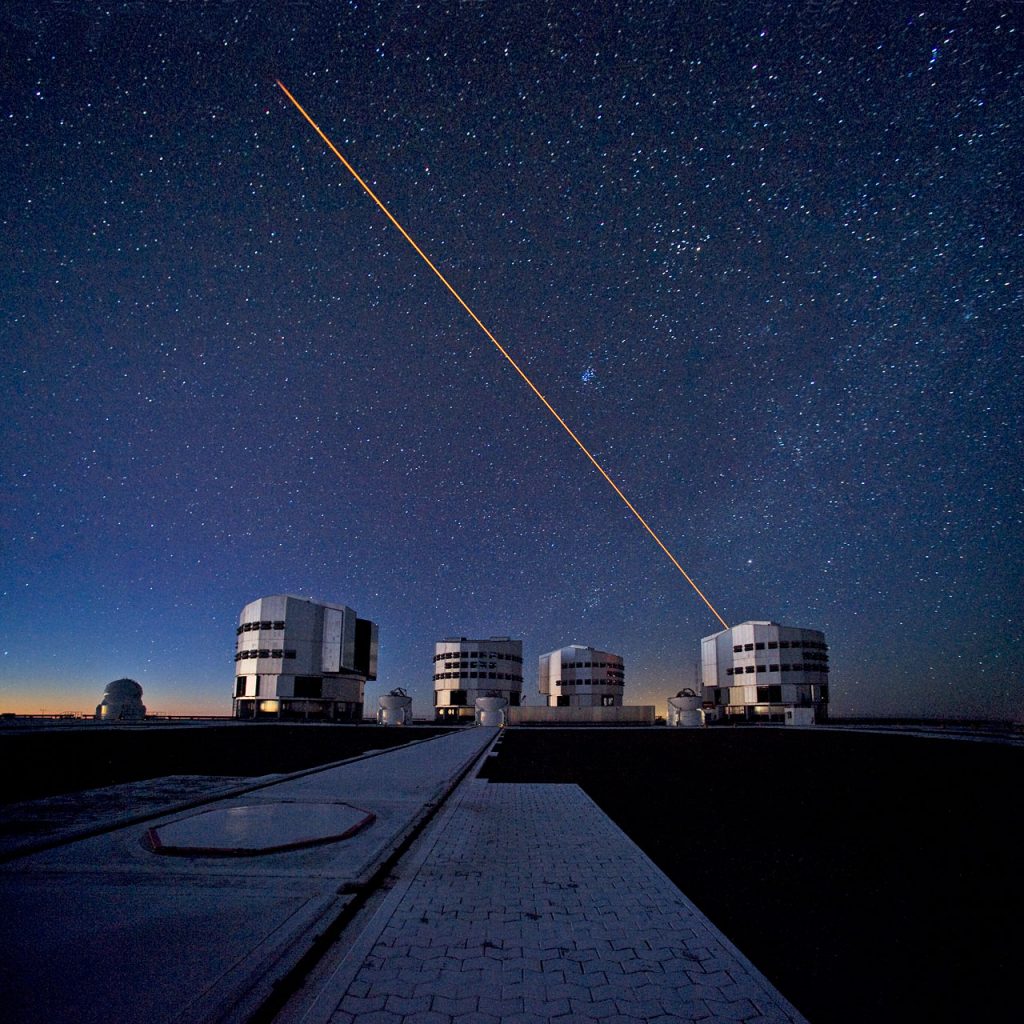

The ExoClock project was created to support the European Space Agency’s Ariel mission, the probe of which is to be launched in 2029. This mission aims to study the chemical composition of approximately 1,000 planets in orbit around stars other than the sun (exoplanets).
The ExoClock project contributes to the mission by using the observations of amateur astronomers under the coordination of professionals from several scientific fields. This is for amateurs to photograph the transit of exoplanets in front of their host star which is part of the mission’s catalog. These photos, taken repeatedly during the duration of the transit, make it possible to know with precision the moment of the beginning and the end of the transit to refine the data on the orbits of these exoplanets. The Ariel mission will be able to use this data to schedule the observations made by the Ariel probe starting in 2029.
Each participant creates a database on the project site with the parameters of his instruments and can then consult the schedule of suggested observations according to the participant’s location and equipment. Here is an example for my situation:
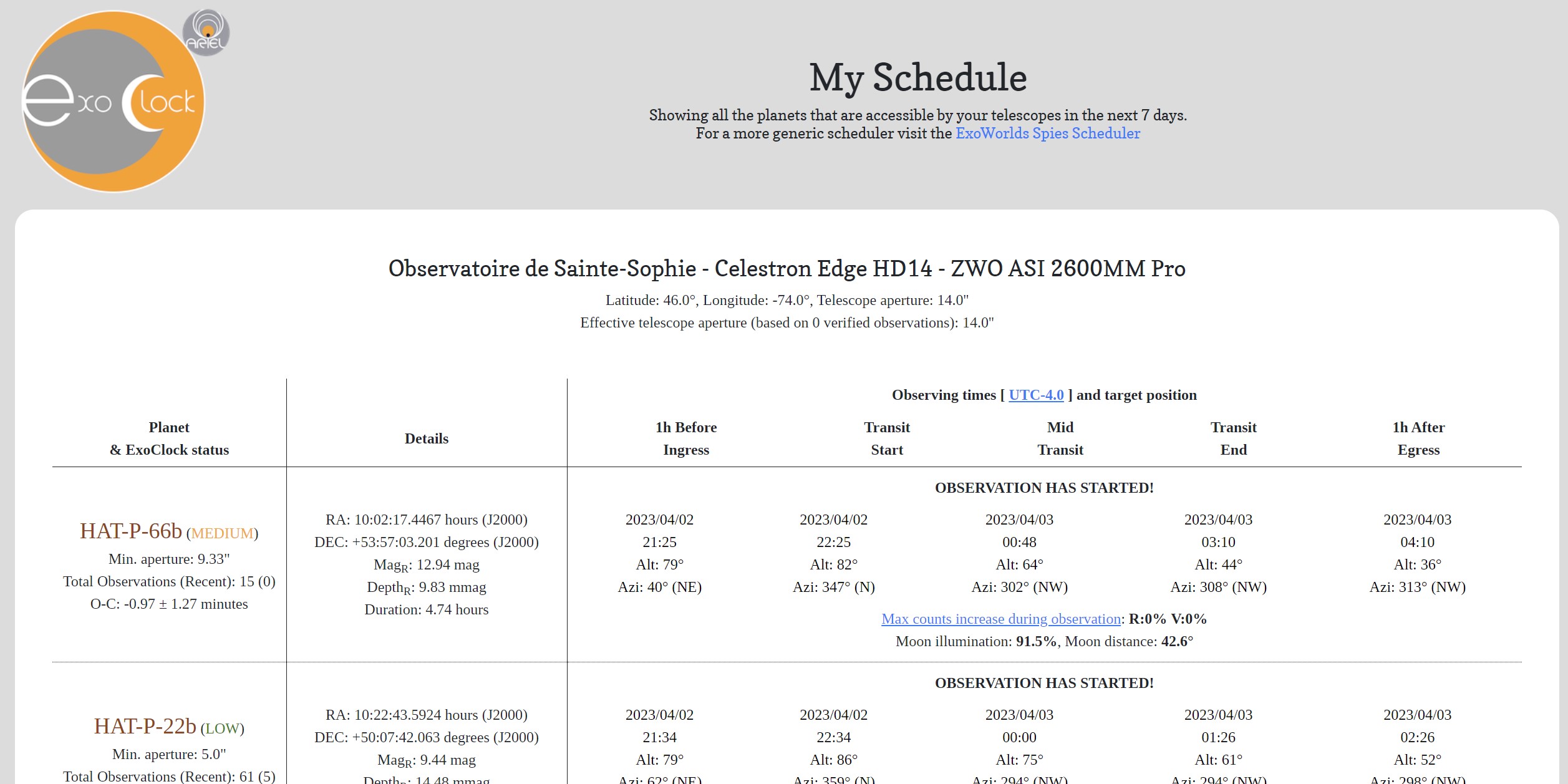
Here is an example of a series of photos I took in 2021 for the transit of exoplanet HAT-P-36b over a duration of 5.2 hours. The analysis made with the project software made it possible to draw the graph below showing the slight drop in luminosity of the host star when the exoplanet passed in front of it:
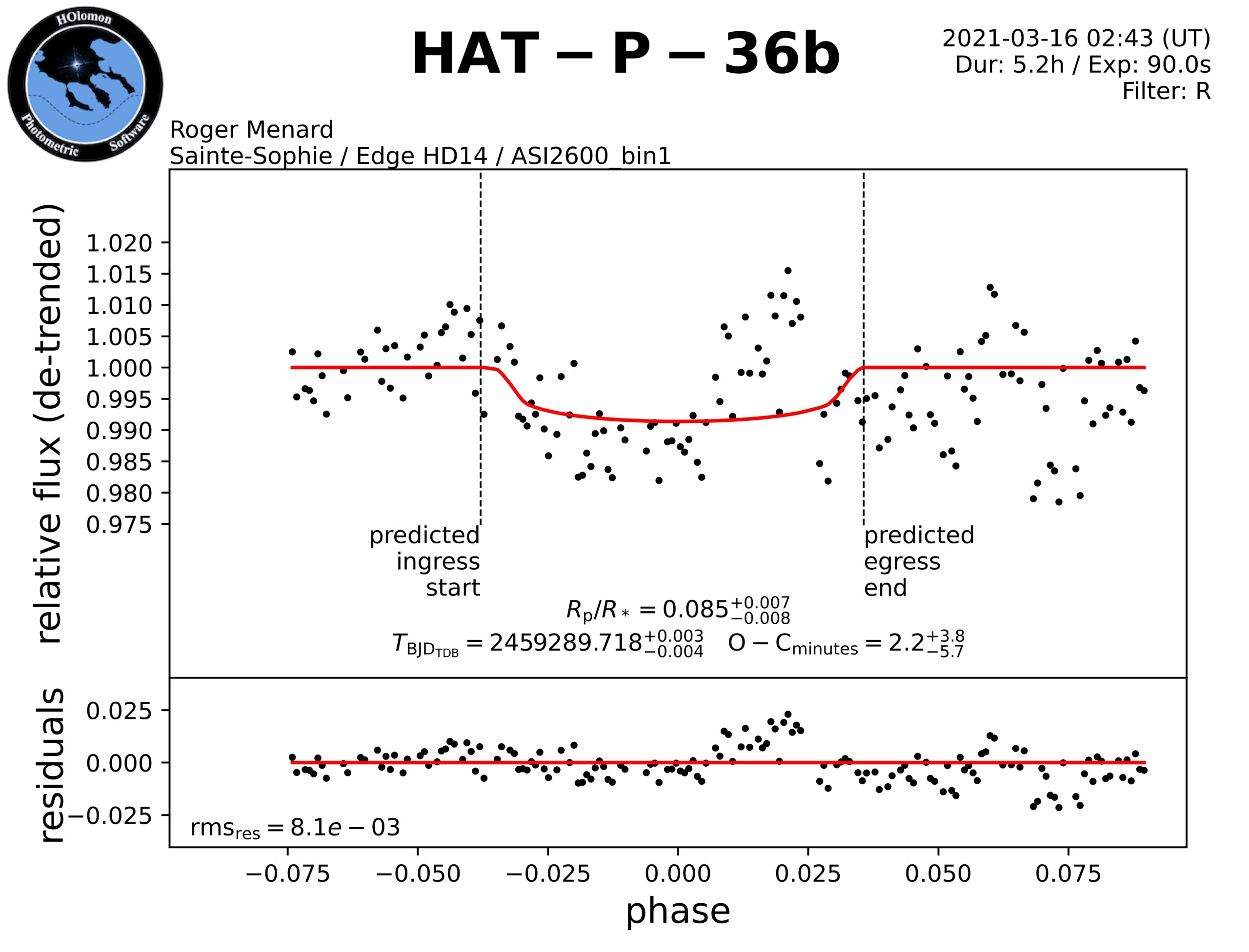
If you are interested in this mission and this project, here is the link: https://www.exoclock.space/
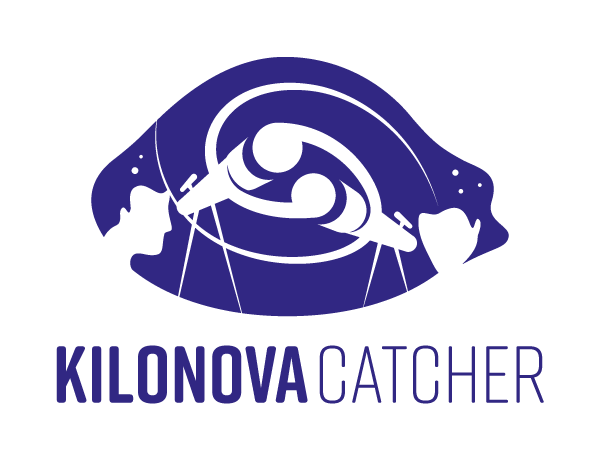
The Kilonova Catcher program open to amateur astronomers aims to identify in imagery and if possible in photometry the optical counterparts of neutron star mergers
Excerpt from the article published in Université Paris Cité (translated):
At the beginning of 2019, just before the start of the O3 run, the third major international gravitational wave observation campaign, Sarah Antier has the ambition to federate a large network of observatories around the world, while integrating a panel of amateur astronomers. Called GRANDMA, this network was quickly born: 25 telescopes distributed in 20 observatories, 29 institutes – including APC at Université Paris Cité – and more than 70 scientists. All share the same objective: to detect and characterize the visible counterparts of gravitational wave sources. Predicted by Einstein a hundred years ago, Sarah Antier recalls that “gravitational waves were first detected in 2015”. A major revolution engendering a new so-called “multi-messenger” astronomy. Damien Turpin clarifies: “Before, the observation of violent cataclysmic events in the universe was done mainly thanks to light signals such as X-rays or gamma rays. The information provided by light was partial, whereas now, by combining it with gravitational waves, we have access to completely new physics”. In this context, how does the GRANDMA network work and how does it differ from other international networks? The winner of the L’Oréal-Unesco grant sketches the outlines.
The participatory dimension: a specificity of GRANDMA
“When I launched GRANDMA two years ago, Sarah tells us, we very quickly agreed with Damien to integrate citizen science into it. Université Paris Cité has agreed to support our approach. Internationally, this is the first time that citizen science has been done to observe the light counterparts from gravitational wave sources.” At first glance, it may surprise to imagine an amateur astronomer equipped with his telescope coming to lend a hand to the greatest scientists and the best equipped observatories in the world. Sarah Antier explains the logic: “There is a huge observational challenge because gravitational wave detectors don’t localize merging compact objects like neutron stars or black holes very well. One is forced to search for a source in hundreds or even thousands of square degrees in less than 24 hours! We thought we could win this race against time by mobilizing an international network of amateur astronomers. The observed universe is relatively close, therefore accessible with amateur telescopes. The challenge is to observe everywhere – northern and southern hemispheres – and fast.” The call for participation launched on this occasion allowed 33 amateur astronomers from all over the world to contribute to the search for a kilonova – these luminous phenomena produced following the fusion of two compact objects. Their discovery should make it possible to better understand the origin of certain chemical elements on Earth and in the universe.
The KILONOVA CATCHER program represents the amateur counterpart linked to the professional GRANDMA network. Among the 33 amateur astronomers participating in the program, there are 3 contributors based in America: Denis St-Gelais from Querétaro in Mexico, Jean-Bruno Desrosiers from the Mont St-Joseph observatory, and myself from Ste-Sophie, north of Montreal.
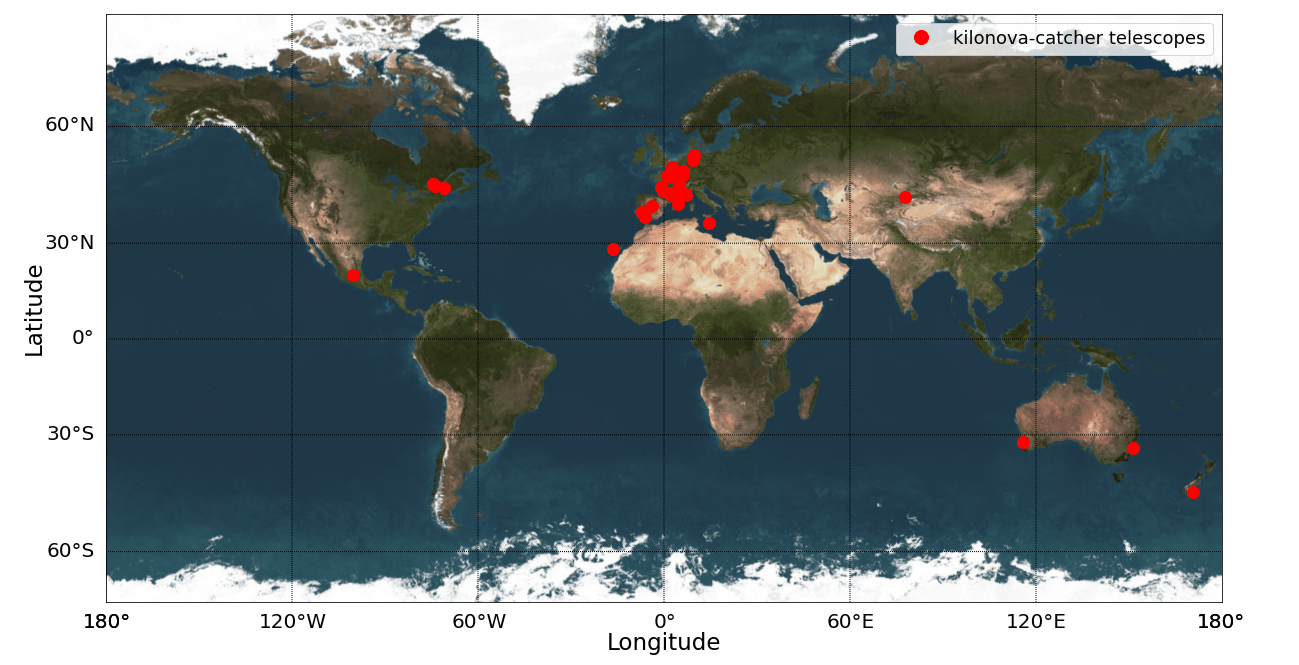
While we were between two observation campaigns (O3 and O4) of the LIGO/VIRGO gravitational wave detectors, our network was called upon to try to detect the visible counterpart of the intense gamma-ray burst in October 2022. With my telescope, I managed to capture the source in question to help with the luminosity assessment. This event is called GRB221009A and here is my photo below. My humble contribution allowed me to appear as a co-author on a publication in the renowned Astrophysical Journal. The photo on the right shows the abastract of that publication. It’s really very motivating!
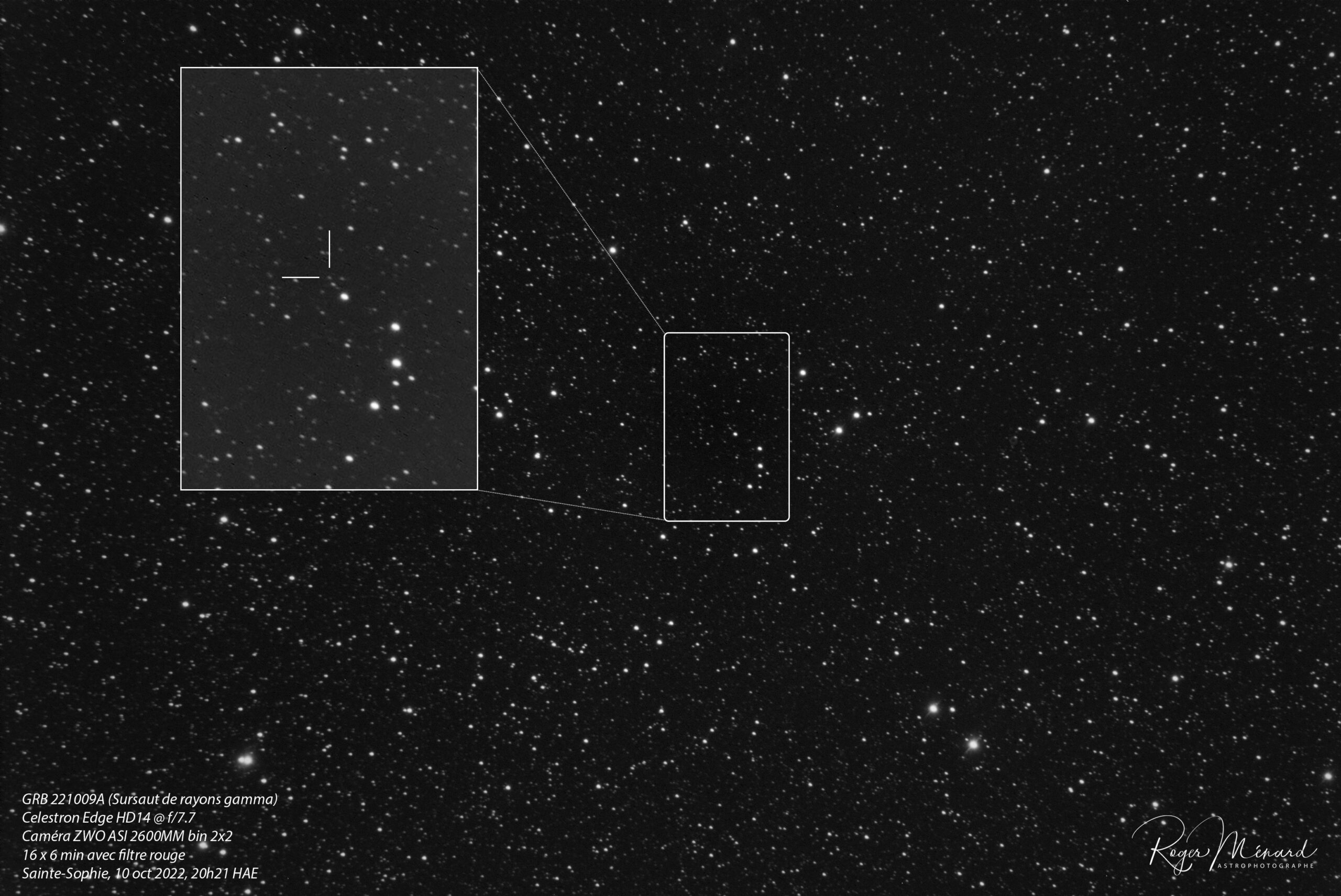
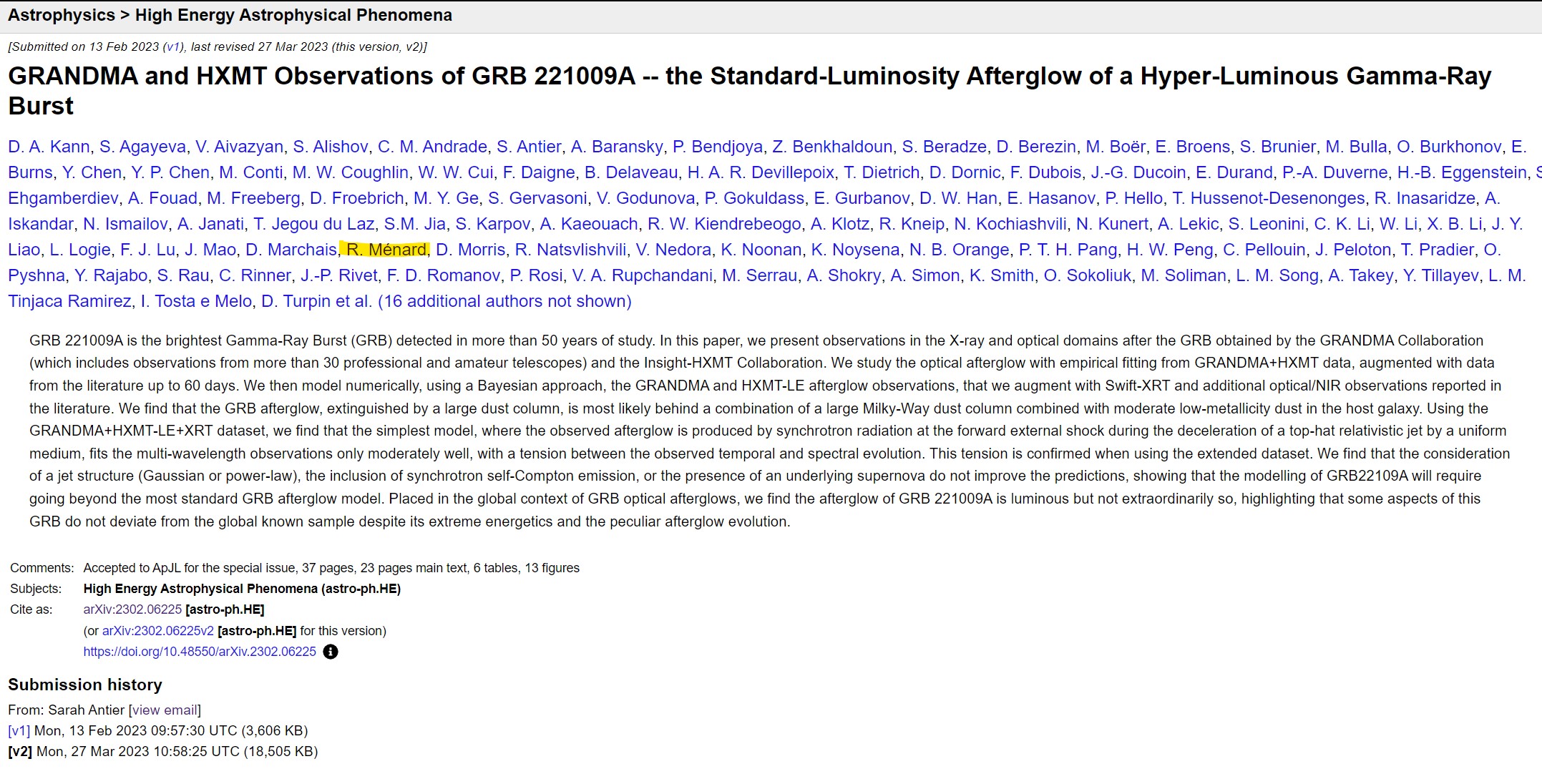
If you are interested in this type of project and you own a telescope with an aperture of 30cm or more (12 inches), I invite you to consult the project at this link: http://kilonovacatcher.in2p3.fr/
